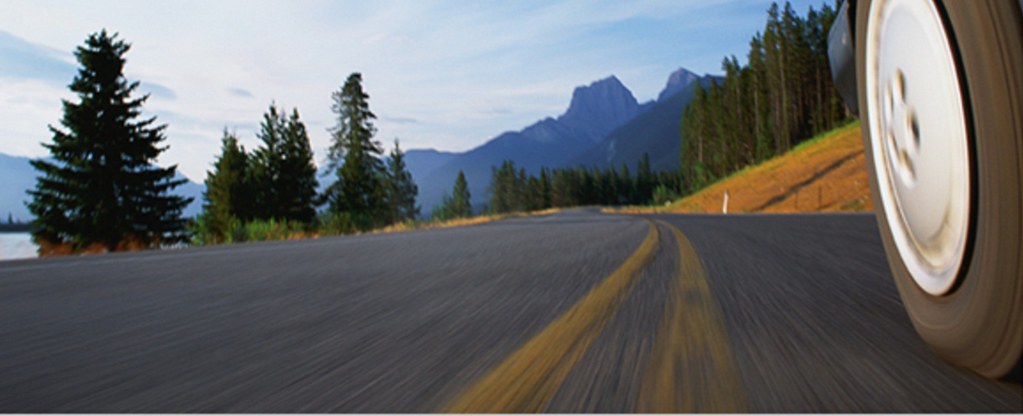The inputs are organised in three hierarchical levels of detail, level 1 being the most accurate where most parameters are directly measured and level 3 being the simplest where only few parameters need to be known and are used to estimate everything else.
As noted before, the relationship between suction and degree of saturation for a soil is described by the Soil-Water Characteristic Curve (SWCC). Figure 1 shows various SWCCs for soils with different characteristics.
Figure 1: Soil-Water Characteristic Curves
The minimum inputs required (input level 3) to calculate the SWCC for a given soil are the plasticity index, PI, the percentage by weight passing the sieve #200, P200, and the effective grain size corresponding to 60% passing by weight, D60. As can be seen, these are all granulometric parameters of the material. P200 and PI are used for soils that contain a certain fraction of fines and have, therefore, a plasticity index larger than zero. They deliver the family of curves on the right hand side of Figure 1, where it is possible to see that thanks to the fine fraction the degree of saturation varies gradually with suction.
D60, instead, is used for coarser materials that have PI=0. In this case the SWCCs show a sharp change in degree of saturation with suction due to the lack of capillarity.
These curves and the determination of the parameters that define them are thoroughly described in the ME-PDG, Part 2 - Chapter 3, therefore won’t be reported in detail here.
The depth of the water table, which can be considered to vary seasonally or to be constant throughout the year, determines the values of suction at any point in the pavement, which are then used to calculate the degree of saturation by means of the SWCC. From the degree of saturation it is then possible to calculate F
u, the environmental factor for unfrozen or fully recovered material.
If the temperatures are below freezing point, the environmental factor takes the form of F
f, which has a constant value much larger than 1 since frozen materials are much stiffer.
Finally, when the soil is thawing the environmental factor becomes F
r (for recovering material) and is given a value lower than F
u. This value is at a minimum at the beginning of the recovering period, when the material is weakest, and tends gradually to F
u as the material returns to its normal, unfrozen state.
An example of how these factors appear with time for a number of nodes in a pavement is given in Figure 2.
Figure 2: Evolution of F
env with time
In Figure 2, it can be seed that on day 1 some nodes are frozen, some are thawing and the rest are unfrozen. As time passes, the coefficients for the frozen material remain constant for as long as the material stays frozen, while for the recovering material they increase up to the normal unfrozen value. Node 12, for instance, stays frozen until day 3 with F
f = 75, then starts thawing and the value of the environmental coefficient drops to 0.6. As the thawing goes on this value starts to increase and will eventually reach the value of F
u. Similarly, node 17 is already thawing at day 1 and at day 6 the thawing ends. At that point the material has completely recovered and the coefficient has reached a value of F
u of 0.9.






























![clip_image004[4] clip_image004[4]](http://lh6.ggpht.com/-hUz2UVf4fKg/UFXAabxXaFI/AAAAAAAAARM/WtwJIgwhRrQ/clip_image004%25255B4%25255D_thumb%25255B6%25255D.gif?imgmax=800)
![clip_image007[4] clip_image007[4]](http://lh3.ggpht.com/-yBC3ZQ5FWI4/UFXAcD8xbeI/AAAAAAAAARg/1zlybpfHNeI/clip_image007%25255B4%25255D_thumb.gif?imgmax=800)
![clip_image010[4] clip_image010[4]](http://lh5.ggpht.com/-XrppLhkmfNs/UFXAdMtvaQI/AAAAAAAAARw/x8MpkwsVhZQ/clip_image010%25255B4%25255D_thumb.gif?imgmax=800)
![clip_image013[4] clip_image013[4]](http://lh3.ggpht.com/-ei93oLPb1CQ/UFXAemLH1JI/AAAAAAAAAR8/G1wUrHB7Xbw/clip_image013%25255B4%25255D_thumb.gif?imgmax=800)
![clip_image016[4] clip_image016[4]](http://lh6.ggpht.com/-Nyqg0nn3n60/UFXAgAqsHbI/AAAAAAAAASQ/shNXMtVqIzY/clip_image016%25255B4%25255D_thumb.gif?imgmax=800)
![clip_image019[4] clip_image019[4]](http://lh6.ggpht.com/-KI60GBPntWw/UFXAhpk24MI/AAAAAAAAASc/Zrw18WrQPXQ/clip_image019%25255B4%25255D_thumb.gif?imgmax=800)
![clip_image022[4] clip_image022[4]](http://lh5.ggpht.com/-DfqT96p4P2Y/UFXAi6RgswI/AAAAAAAAASs/h7t3-RzwlZs/clip_image022%25255B4%25255D_thumb.gif?imgmax=800)
![clip_image025[4] clip_image025[4]](http://lh6.ggpht.com/-XPieronSWwU/UFXAkAKwpEI/AAAAAAAAATA/jrzG1JgHztg/clip_image025%25255B4%25255D_thumb.gif?imgmax=800)
![clip_image028[4] clip_image028[4]](http://lh5.ggpht.com/-7_emr2UrHms/UFXAlRaOgQI/AAAAAAAAATQ/Ab8UP8hf254/clip_image028%25255B4%25255D_thumb.gif?imgmax=800)
![clip_image034[4] clip_image034[4]](http://lh4.ggpht.com/-1WHlK_Uw4kw/UFXAnx2ntYI/AAAAAAAAATw/zeVVeM3mosc/clip_image034%25255B4%25255D_thumb.gif?imgmax=800)










